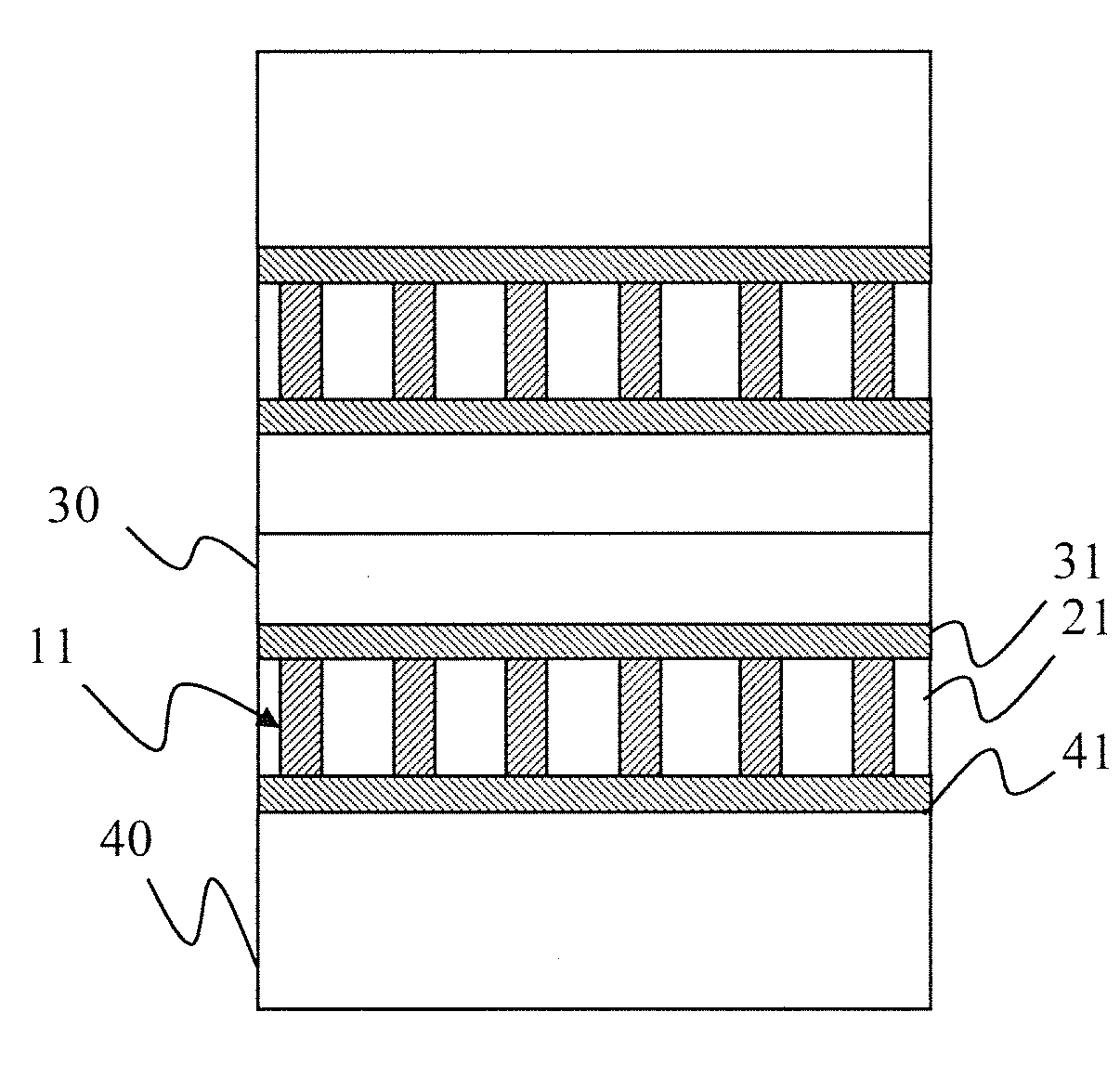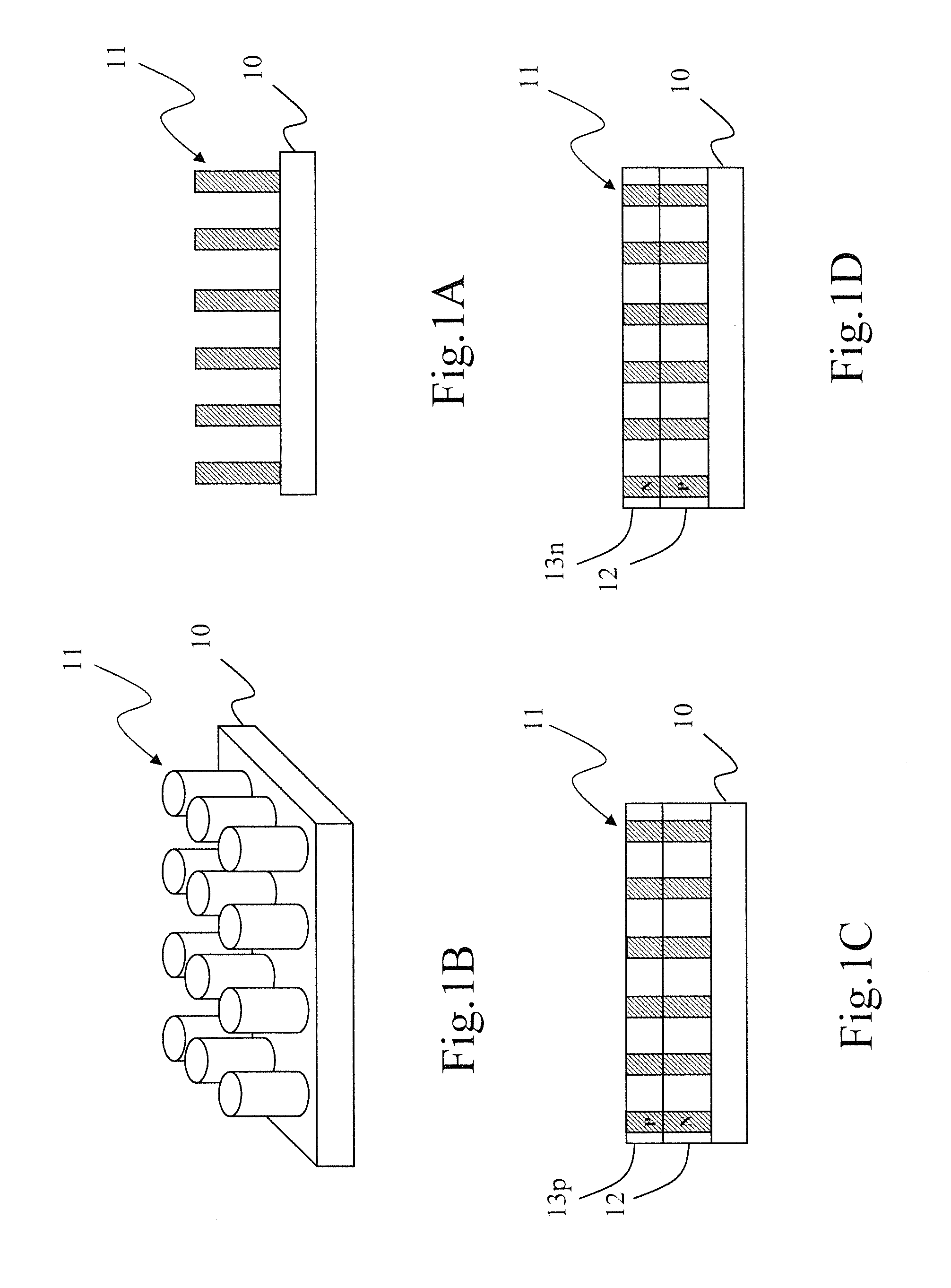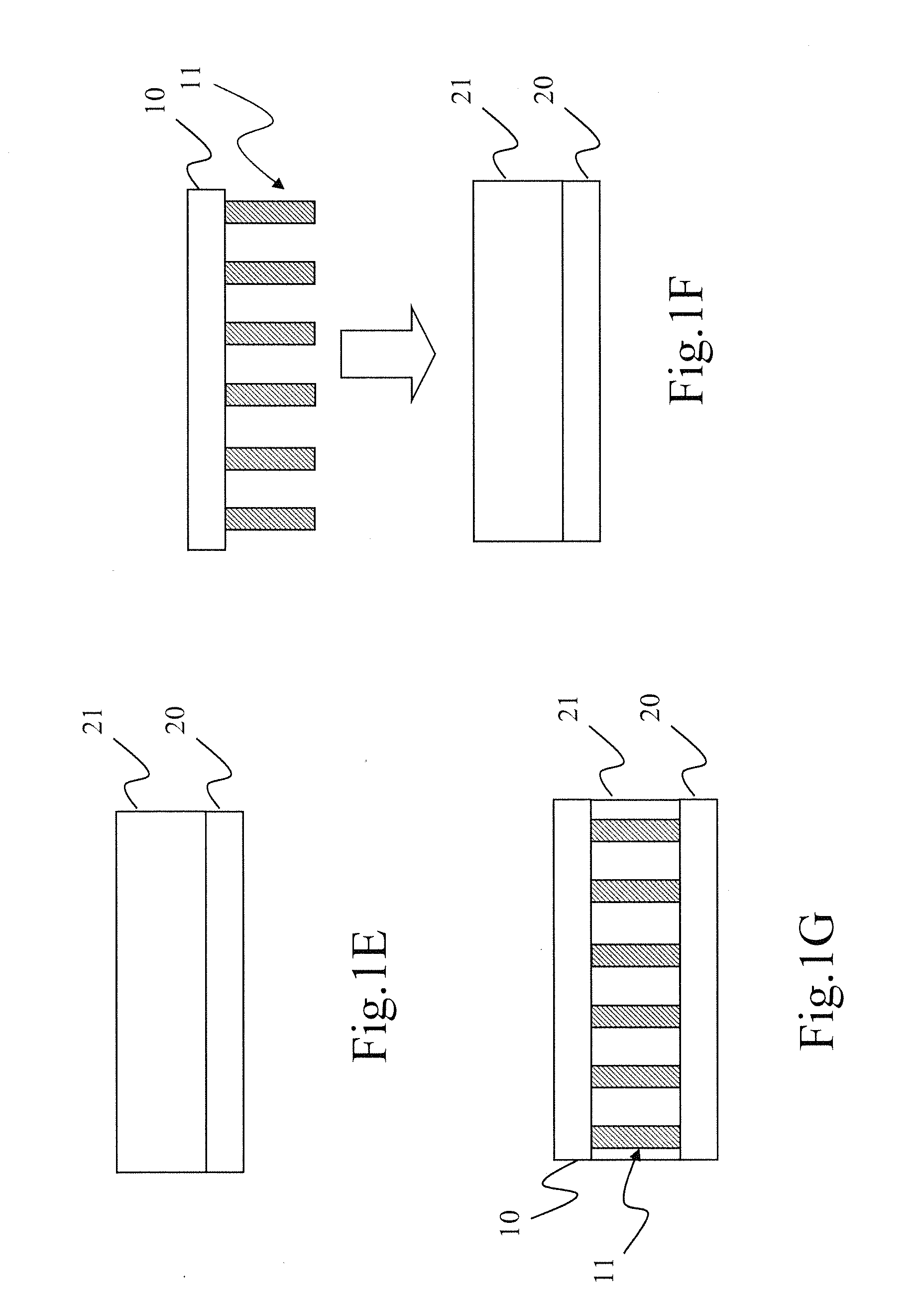Micro/nanostructure pn junction diode array thin-film solar cell and method for fabricating the same
a pn junction diode array and solar cell technology, applied in the field of thin-film solar cells, can solve the problems of increasing the probability of electron-positive, the thickness of the layer is too large, and the fabrication cost of the material is too high to popularize solar energy, so as to save the material of semiconductors and fine-quality semiconductor materials
- Summary
- Abstract
- Description
- Claims
- Application Information
AI Technical Summary
Benefits of technology
Problems solved by technology
Method used
Image
Examples
Embodiment Construction
[0023]Refer to from FIG. 1A to FIG. 1H diagrams schematically showing a method for transferring a semiconductor micro / nanostructure array according to one embodiment of the present invention. As shown in FIG. 1A and FIG. 1B, a source-material wafer 10 having a semiconductor micro / nanostructure array 11 is provided firstly. The semiconductor micro / nanostructure array 11 is made of an arbitrary semiconductor, such as an elemental semiconductor, a binary compound semiconductor, or a multi-component compound semiconductor (e.g. silicon, germanium, gallium arsenide, indium phosphide, gallium phosphide, antimony selenide, etc.). The longitudinal section of the semiconductor micro / nanostructure array 11 has a width of from 1 nm to 3000 μm and a length of from 50 nm to 50 μm. The length and width of the micro / nanostructure array 11 may vary with the absorption coefficient of the material. The source-material wafer 10 is made of an elemental semiconductor, a binary compound semiconductor, or...
PUM
 Login to View More
Login to View More Abstract
Description
Claims
Application Information
 Login to View More
Login to View More - R&D
- Intellectual Property
- Life Sciences
- Materials
- Tech Scout
- Unparalleled Data Quality
- Higher Quality Content
- 60% Fewer Hallucinations
Browse by: Latest US Patents, China's latest patents, Technical Efficacy Thesaurus, Application Domain, Technology Topic, Popular Technical Reports.
© 2025 PatSnap. All rights reserved.Legal|Privacy policy|Modern Slavery Act Transparency Statement|Sitemap|About US| Contact US: help@patsnap.com



